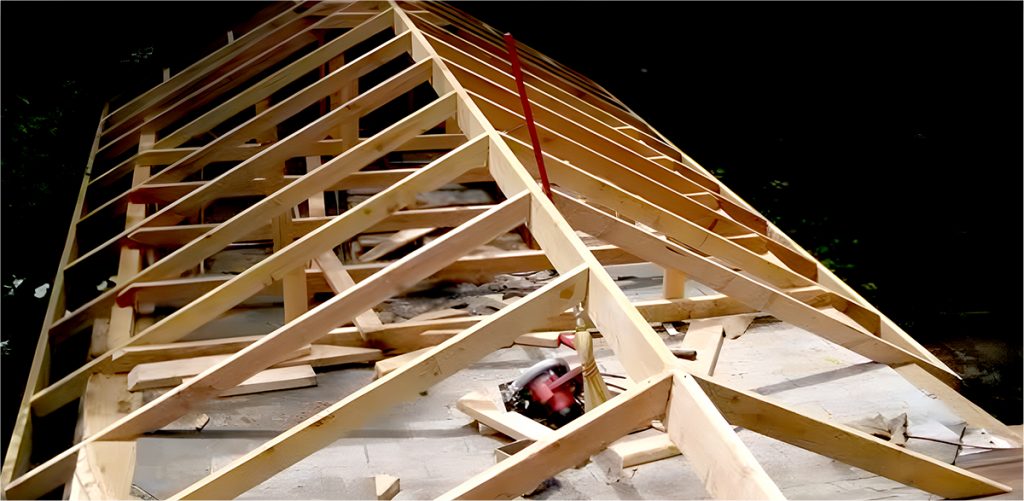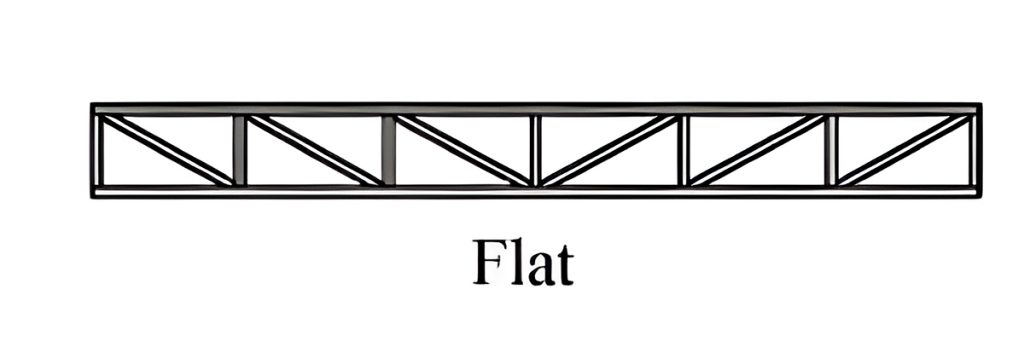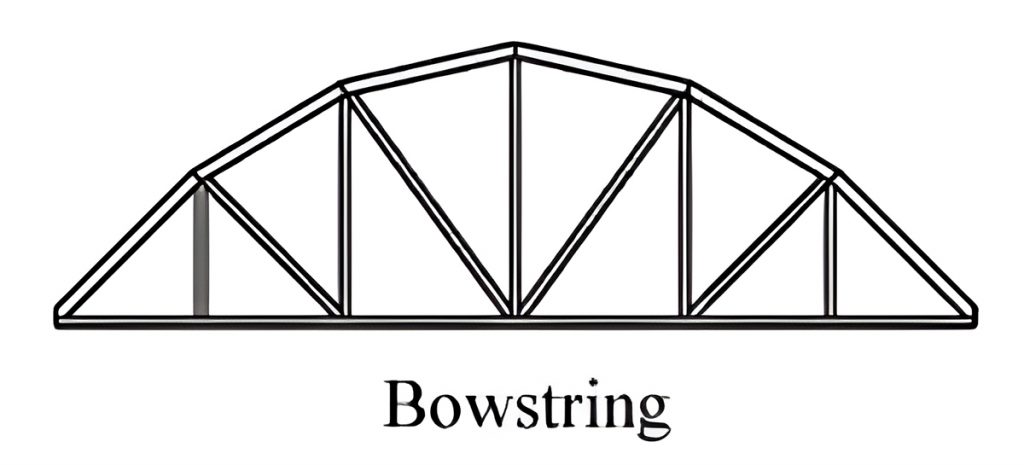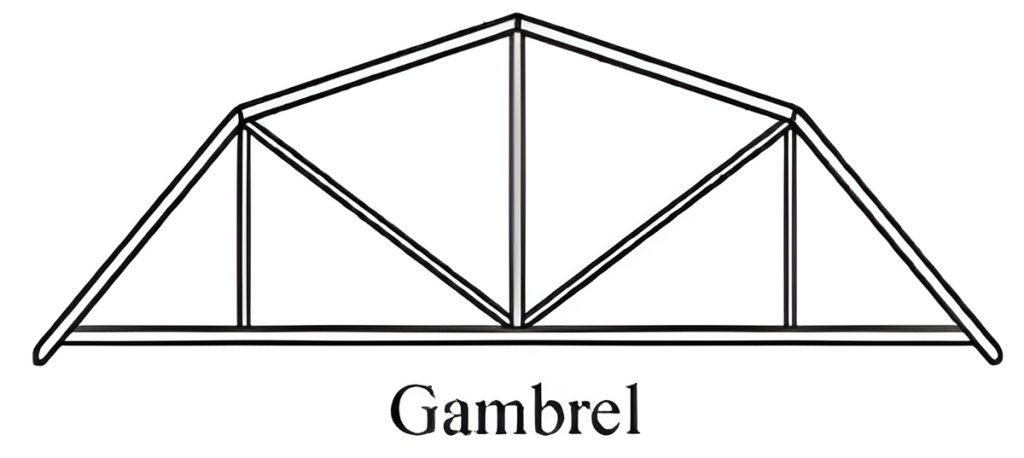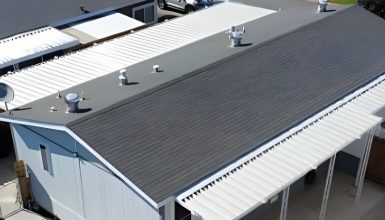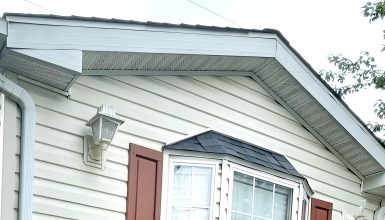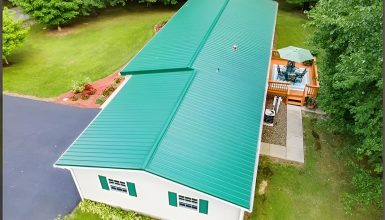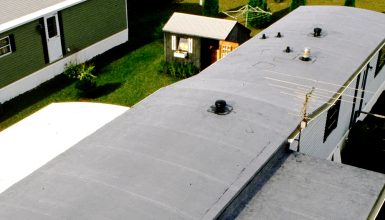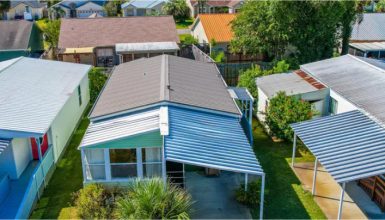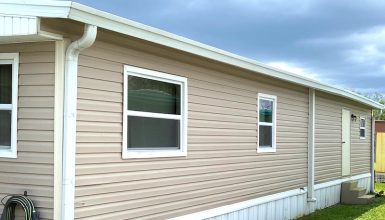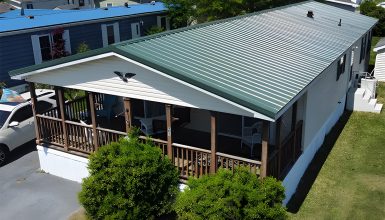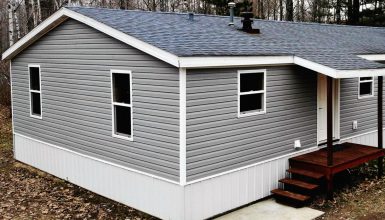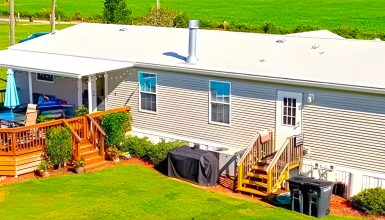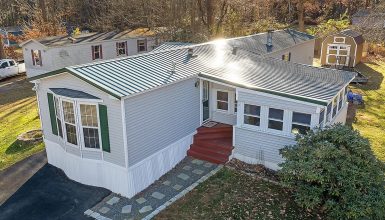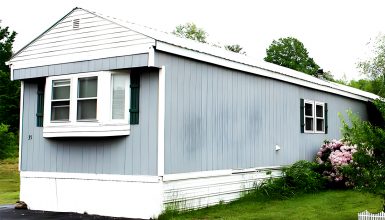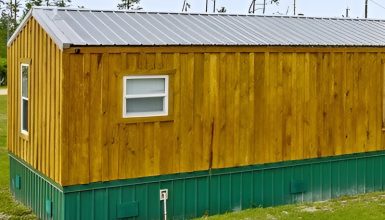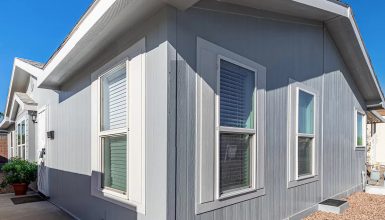Roof trusses might not be the first thing that comes to mind when picturing your dream mobile home. Yet, these unseen heroes are pivotal in holding it all together – quite literally! They’re the backbone of your roof, bearing its weight and bracing it against wind and weather. Ready to delve into the world of mobile home roof trusses? Let’s dive in!
What Are Mobile Home Roof Trusses?
Imagine the skeleton that gives your body shape and structure. Now, translate that to your mobile home. That’s what roof trusses do – they’re the skeleton of your roof!
A roof truss is a framework typically made up of triangular units. These triangles are arranged in a way that distributes the weight of the roof across the walls of your mobile home. It’s an engineering marvel, creating stability and durability for your mobile abode.
The materials? Usually, it’s good old-fashioned wood – think sturdy timber or engineered wood products. But sometimes, you’ll find them made from steel, particularly when extra strength is needed.
So, let’s toast to the trusses! They’re working hard up there to keep your roof where it belongs – above your head, shielding you from the elements. And now that you’ve got a handle on what these mighty triangles do let’s explore the variety they come in, shall we?
5 Mobile Home Roof Trusses
Like the variety of mobile home designs that grace our highways and parks, trusses come in several types, each with perks and quirks. The main types of mobile home roof trusses include:
1. Flat Trusses
First up in our truss tour, we have flat trusses, also known as parallel chord trusses, the unsung heroes of the truss world. They’re as straightforward as their name suggests, offering a flat, horizontal design. Picture a tabletop or a calm lake surface. That’s what your roof will look like outside with these trusses.
Why might you opt for flat trusses? Simplicity, my friend. Their straightforward design makes them easy to install and can be an economical choice. Plus, for all you modern design lovers, they lend a sleek, minimalist vibe to your mobile home’s aesthetic.
But remember, every silver lining has a cloud. Flat trusses may not be your go-to if you live somewhere with heavy snowfall. You see, the flat design allows snow to pile up on the roof. And an overloaded roof is a no-no when we’re talking about mobile homes.
Here are some typical flat trusses specifications you might find:
- Span
The span, or the distance between the truss supports, can range widely depending on the size of the mobile home. The span for a single-wide mobile home might be around 14 to 18 feet, while for a double-wide, it could be as much as 28 to 36 feet.
- Spacing
The spacing between each truss varies but is often 16 or 24 inches in the center. It is the distance from one truss’s center to the next’s center.
- Slope
Flat trusses are typically used for roofs with little to no slope. A roof’s slope, or pitch, is usually expressed as a ratio, such as 1:12, which means that for every 12 feet of horizontal distance, the roof height changes by 1 foot. A genuinely flat roof might have a slope of 1:50 or less to allow for some drainage.
So, think flat trusses when simplicity and economy are your top priorities, but perhaps skip them if you’re a snowbound dweller.
2. Bowstring Trusses
Now, let’s saunter over to the realm of bowstring trusses. Imagine an archer’s bow, gracefully curved, resilient yet flexible. That’s what bowstring trusses look like!
This truss design is a bit of a rarity in mobile homes, but don’t let that deter you. Their eye-catching arched shape is not just for show; it enables them to cover larger areas without internal support. Picture a grand, open-concept mobile home with airy, vaulted ceilings. Feels spacious already, right?
Plus, their curved design is perfect for shedding off rain or snow. It means they’re less likely to collect a roof full of white stuff if you live in a wintry climate.
But let’s balance the scales here. While their architectural appeal is undeniable, bowstring trusses are slightly more complex to construct and install than other types, which could mean a higher cost. They may also require more headroom, so they’re not the best choice if your mobile home has height restrictions.
Here are some common bowstring trusses elements:
- Span
Bowstring trusses can cover a large span without intermediate supports, often up to 30 feet or more, which makes them ideal for wide, open spaces.
- Height
The height of a bowstring truss, or the arch’s rise, can vary significantly depending on the mobile home’s design and the truss’s span. The greater the span, the higher the arch usually is.
- Spacing
Bowstring trusses can be spaced further apart than other trusses, sometimes up to 30 inches in the center or more. It is because of their strength and the way they distribute loads.
If you’re drawn to their curvaceous charm and have room in the budget, bowstring trusses could be the statement piece your mobile home never knew it needed.
3. Gabled Trusses
Time to roll out the red carpet for the rockstar of the truss world – the gabled truss! You’ve probably seen these darlings without even realizing it. They create the classic triangular roof you often associate with a cozy, inviting home.
Gabled trusses are the poster child of mobile home roofs for several reasons. First, their triangular shape is excellent at weathering the elements, guiding rain and snow off the top. Second, they give you a bonus of added attic space. So if you have a penchant for storing holiday decorations or that collection of vintage hats, a gabled roof has you covered – literally!
And the options don’t end there. You’ve got standard gabled trusses offering a simple triangular shape. Or, if you’re in for a twist, go for the dual-pitched or double-gabled trusses. These guys sport two different pitch angles, adding a touch of architectural interest to your mobile home.
But remember, with great space comes a slightly higher cost. Gabled trusses may set you back more than simpler designs like flat ones, mainly because they use more material.
Here are some typical specifications of gabled trusses :
- Span
Like other truss types, the span of a gabled truss can vary significantly depending on the size of the mobile home. For a single-wide mobile home, the span might be around 14 to 18 feet, while a double-wide could have a span of 28 to 36 feet or more.
- Pitch
The pitch, or the steepness of the roof slope, is a key specification for gabled trusses. It’s usually expressed as a ratio of vertical height to horizontal distance. For example, a 4:12 pitch means the roof rises 4 feet for every 12 feet horizontal distance. The exact pitch can vary, but 4:12 is standard for mobile homes.
- Spacing
Gabled trusses are usually spaced 16 or 24 inches in the center, which is the distance from the center of one truss to the center of the next.
- Height
The height of a gabled truss, or the rise from the span’s center to the roof’s peak, can vary. A higher peak can create more attic space but might also increase wind resistance.
In the end, if you’re after a traditional look with some extra storage and okay with spending a bit more, gabled trusses could be your perfect match.
4. Gambrel Trusses
Next stop on our truss tour – the fascinating world of gambrel trusses. Think of those charming red barns that grace country landscapes. That’s the gambrel style for you!
This particular truss type has a distinct, double-slope design on each side. The upper slope is shallow, while the lower one is steeper. It’s like two different roof pitches playing nice together on one roof!
But it’s not just about good looks. Gambrel trusses have a knack for creating extra living space in the upper part of your mobile home. Loft lovers, this is your cue! If a cozy reading nook or a spare bedroom tucked under the eaves appeals to you, gambrel trusses might be your dream.
However, as enchanting as they might be, gambrel trusses aren’t as simple to install as flat or gabled trusses. They require more materials and intricate workmanship, which could translate into higher costs. Also, suppose you’re living in areas with heavy snowfall. In that case, their design can allow snow to accumulate, which you’ll want to consider.
With its distinctive two-slope design, the gambrel truss has a few unique specifications. Here’s the lowdown:
- Span
The span of a gambrel truss depends on the size of the mobile home. For instance, the span for a single-wide might range from 14 to 18 feet, while a double-wide could accommodate a span of 28 to 36 feet.
- Pitch
Gambrel trusses’ pitch is slightly different since it has two distinct slopes. The upper slope is often less steep, around 2:12 to 3:12, while the lower slope can be pretty steep, around 12:12.
- Spacing
Gambrel trusses are typically spaced 16 or 24 inches like their truss siblings.
So, if you’re after character, charm, and extra space and are okay with the potential additional cost, gambrel trusses could be the perfect crowning glory for your mobile home.
5. Scissor Trusses
Alright, we’ve arrived at the final stop on our truss trip – the captivating scissor trusses! Now, don’t let the name throw you. There’s no cutting involved. Instead, imagine a pair of open scissors. That’s the shape scissor trusses take!
What makes scissor trusses stand out is their unique interior design. Unlike other trusses where the bottom chord is flat, both top and bottom chords slope inward in a scissor truss, creating an elegant, vaulted ceiling inside. Talk about turning the ceiling into a statement piece!
Aside from the visual appeal, scissor trusses can also help with the acoustics inside your mobile home. That’s right. The inward slope can minimize echo, making it a fabulous choice if you enjoy music or a cozy, intimate setting.
Conversely, their complex design could have a higher price tag than traditional truss designs. And the interior vaulting means you may not have as much attic space.
Scissor trusses have certain specifications you’ll want to consider:
- Span
The span of a scissor truss can vary quite a bit depending on the size of the mobile home. For a single-wide mobile home, the span might be around 14 to 18 feet, while a double-wide could have a span of 28 to 36 feet.
- Pitch
A scissor truss’s top and bottom chords have a pitch, unlike other truss types. The bottom chord, which forms the ceiling inside the mobile home, usually has a gentler slope than the top chord.
- Spacing
Like other mobile home trusses, scissors trusses have spaces 16 or 24 inches in the center. It is the distance from one truss’s center to the next’s center.
- Height
The height of a scissor truss can vary. Unlike other trusses, the bottom chord of a scissor truss is not flat, which can reduce the available height for an attic or loft.
If you’re all about aesthetics and are not afraid to splurge for a stunning ceiling, scissor trusses could be the showstopper in your mobile home. And that, my friend, wraps up our truss journey!
Conclusion
There’s no one-size-fits-all when it comes to trusses. Every mobile home is unique, and your choice of truss should reflect your individual needs, budget, and style. Lastly, consider local building codes and the specifics of your mobile home. Not all truss types may be suitable or permitted, so always check before deciding.

